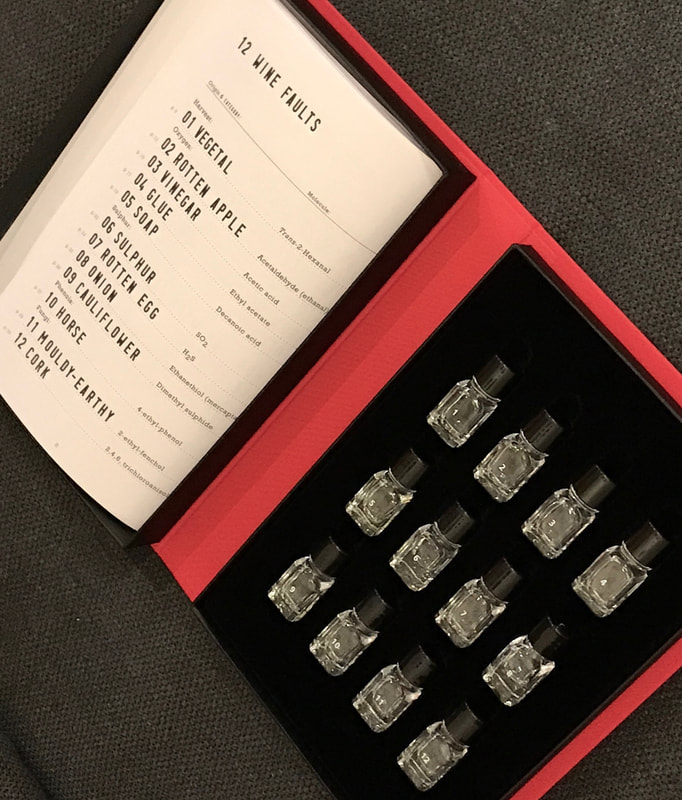 Last night I had the chance to go to a Champagne tasting event in Bordeaux that gave me a chance to try wines from some of the best producers in France, everything from Moët & Chandon to Dom Pérignon. It was definitely a night of some of the best wines I’ve ever tasted in my life! However, the one that stood out the most was the one that was corked – I definitely won’t mention the producer. I had gone with a sommelier friend of mine, and she had noticed the cork right away. Once she let me had a whiff, I could tell there was definitely a slight moldy, musty smell – and those smells also ended up in the flavor profile. Just one sip, and I had to spit it out. I really shouldn’t have been so excited to try a corked wine, but it was the first time for it to be pointed out to me. It got me thinking about cork, and the other types of faults that can ruin wine. When it comes to wine faults, you can divided them into 5 categories: (1) fungi; (2) harvest; (3) oxygen; (4) sulphur; and (5) phenols. For this post, we’ll take a look at cork, which belongs to the fungi group. It’s hard to avoid since many wines use oak cork (from Quercus suber) to seal bottles. Its use first started in the late 1600s to replace glass stoppers. Many producers prefer it because of its “elasticity, compressibility, and impermeability to liquids and gases.” An interesting fact about cork is that most of it comes from oak trees in Portugal that need to be at least 25 years old, and that these trees can only be harvested every 9 years. A much longer wait than the one for grape wines. When you have a corked wine, it will be completely random - you can have just one bottle from a case that is corked. This fault is more common that most wine drinkers think it is – about 3% to 5% of wine bottles can be corked! There will often be a musty, moldy, or even wet dog smell to the wine. It might be difficult to detect it on the nose, but it’s definitely more apparent on the palate. If you drink a corked wine, it won’t kill you, but it’ll be unpleasant. Now, you’re probably wondering where this smell comes from, right? Well, it’s caused by 2, 4, 6-tricholoro-anisole, or TCA for short. This is a type of fungus that naturally occurs in the bark of cork tree, so it’s not that hard for it to end up in the cork. Ironically, if a cork doesn’t naturally have TCA, it can develop as part of the cleaning, bleaching and sterilization processes of cork, especially if the producer uses chlorine or hydrogen peroxide. TCA can hide in unclean cellars, and spread into the cork during those processes. You definitely want to make sure your cellars and machinery are pristine since a single drop of TCA can contaminate more than 100 Olympic-sized swimming pools! Keep in mind that 90% of cork taint makes wine taste moldy. However, there are 3 other types of smells that result from poor quality cork. The first one is a completely foul, putrid smell – think of rotten meat. This comes from yellow stains at the base of the cork tree trunk. You don’t have too worry too much about this type of taint since it only affects 1 in 100,000 bottles. A stagnant smell is also another type of taint, and this results from poor hygiene during the production process, particularly when the cork isn’t dried correctly. Finally, a corked wine can also smell smoky and have solvent odors – think of smells connected to nail polish, paint thinners and detergents. This is due to a cork that is too small for the bottle, and if the cork is too small, it allows leakage into the bottle, which allows for mold and/or bacteria to develop. This is quite easy to detect since you’ll be able to see the mold on the bottle of the cork. Yuck! To help me identify other wine faults, I got the Wine Faults kit from Le Nez du Vin that has 12 fault aromas. Once I get a better grasp of them, I’ll write another post on the other type of faults. I’ve spent the past few days using the kit, and it is really disgusting smelling some of them, but still very educational!
1 Comment
|
Archives
November 2017
Categories
All
|


 RSS Feed
RSS Feed
